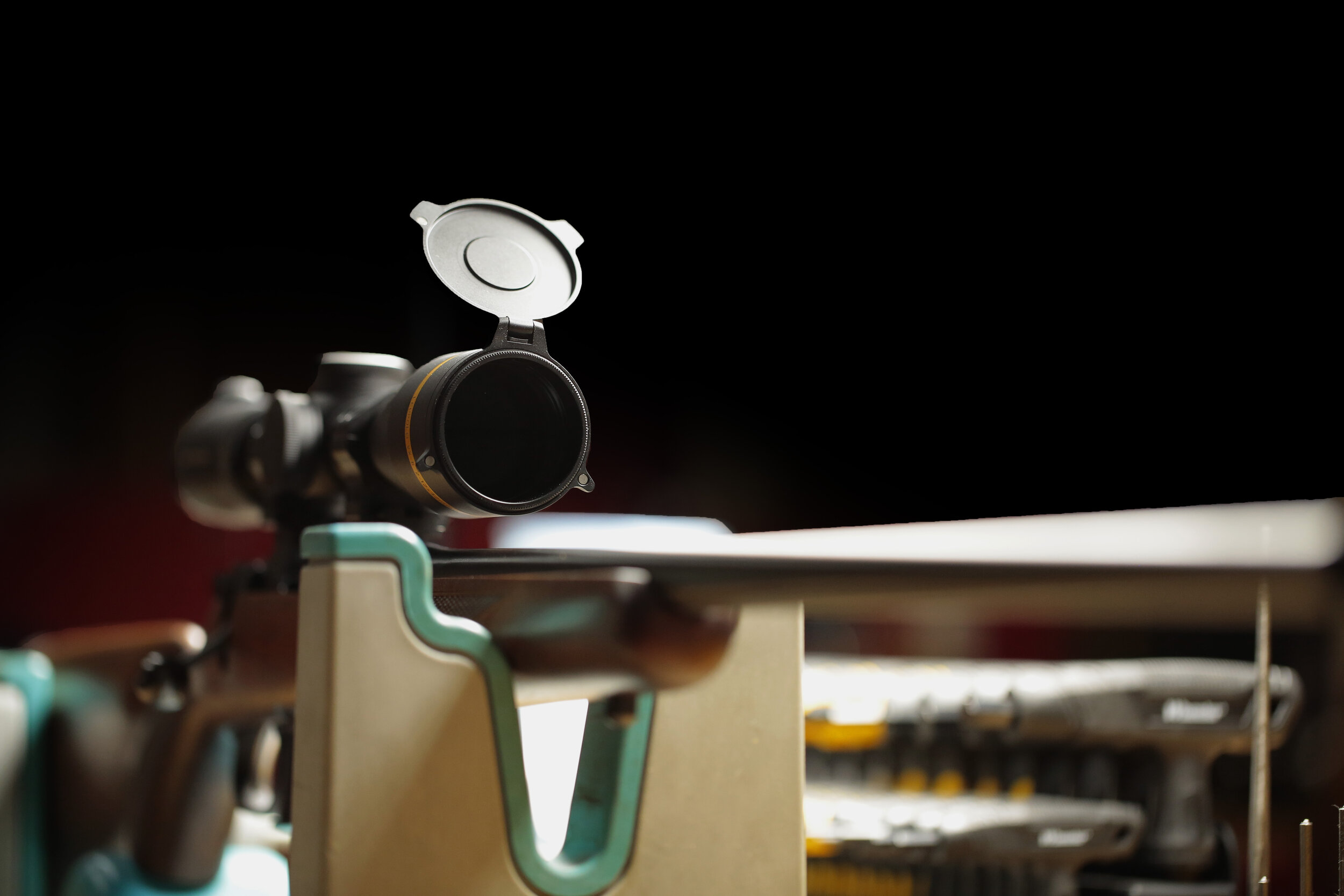
Old Buzzard’s Tips for Scope Selection
First, start by determining what your budget will be. You can go top of the line and spend more or be tack an economical approach. Determine what you are using your scope for, hunting or competition. Will you be shooting short range, long range or combination of the two?
Things to ask yourself are:
What are the typical light conditions when you are shooting?
What are the typical weather conditions when you are out? Weather seals and anti-fog coatings are options on some scopes.
Do you want a fixed power, single power magnification, or a variable power with multiple levels of magnification available, that allows for more versatility while shooting.
Determine what reticule you like to use.
-Adjustments in MIL’s or MOA*
-First focal plane or second focal plane*
Our #1 recommendation is to make sure your scope has a life time warranty! We like companies that stand behind their products for the long term.
As you can see there is a lot to think about when choosing a scope for your firearm. We are here to help!
*MOA or MIL
MOA, or minute of angle, is a unit of measurement used in long range shooting that is equal to 1.0473 inches at 100 yards, which is typically rounded to 1 inch. Most hunting scopes have 1/4 MOA adjustments which move bullet impact ¼ inch per click, or graduation, at 100 yards. At 50 yards the movement is half as much at 1/8” per click, and at 200 yards it is twice as much at ½” per click.
MIL is short for milliradian. You may also hear MIL be referred to as MRAD. Don’t let that confuse you, the two terms are completely interchangeable. For the purpose of this post, we’ll stick with MIL.
A MIL is 1/1000 the distance to the target regardless of whether the distance to the target is measured in yards or meters. At 100 yards 1 MIL is equal to 3.6” and at 1000 yards, 1 MIL is equal to 1 yard. Basically, a 360-degree circle is made up of radians which are angles based on a circle’s radius and are equal to 1000 MIL. Each radian is made up of several milliradians, total there are 6283 milliradians are in a circle. To be clear the MIL system is not metric nor is it the imperial system, but it does correlate more with the metric system.
It has been said time and time again that neither system, MIL or MOA is inherently better and yet the debate still lives on. The two systems both work well, and a shooter really can’t go wrong with either the MIL or MOA system. What it all comes down to is personal preference. The best way to choose is to consider what scenarios you are using your firearm for, what you’re comfortable with, and which one you take the time to learn.
If thinking in inches and yards is what you’re used to, and you’ve dabbled with MOA before, it might be a better idea to go ahead and stick with what you know. On the other hand, if you’re a brand-new shooter and haven’t grown attached to a certain system it may be a good investment of your time to learn how MIL works. Since trends are starting to focus more on the MIL system rather than the MOA system, that would probably be the right choice for a beginner.
What is a First Focal Plane
A first focal plane scope means that the reticle is placed in front of the magnification lens. As a result, the scope’s reticle size changes as you shift through magnification.
Here’s an example:
First Focal Plane example (Image via Tacticalclassroom)
The biggest benefit of using a FFP rifle scope is that the holdover points remain the same throughout all magnifications.
For example, the 8 MOA line is at 8 MOA on the highest setting, the lowest setting and everything in between. This makes FFP rifle scopes — like the best scope for AR-10 — great for long-range shooting.
However, there are two draw backs:
First, FFP reticles could appear large and thick at higher magnifications, while small and thin at lower magnifications. This could make it a bit harder to see your target.
Second, first focal plane scopes are generally more expensive than a second focal plane scope. Speaking of SFP scopes…
What is a Second Focal Plane
A second focal plane scope means that the reticle is placed behind the magnification lens. That means the scope’s reticle size remains the same as you shift through magnification.
Here’s an example:
Second Focal Plane example (Image via Tactical classroom)
Unlike FFP rifle scopes where the reticle could be a bit hard to see at times, SFP reticles are easy-to-see at all magnifications.
However, spacing for holdover becomes problematic. Generally, sub tensions will only be accurate at one magnification (usually the highest). So, if you move any less than the highest magnification, the spacing for holdover changes.
As a result, you’d have to calculate the spacing for each power settings.
Now that we’ve outlined both first focal plane and second focal plane, you might be wondering…
Which Focal Plane Should I Choose?
Here’s the super simple answer:
If you’re a long-range shooter or hunt in open country, go for a first focal plane optic.
Otherwise, opt-in for a second focal plane scope. The reticle is more useable at lower magnifications, cheaper and more popular.
For more in-depth scope information check out these associated articles:
https://www.bushnell.com/through-the-lens/bu-blog-an-essential-guide-to-choosing-a-rifle-scope.html
https://tractoptics.com/blog/understanding-rifle-scope-reticles/


For more in-depth scope information check out these associated articles:
https://www.bushnell.com/through-the-lens/bu-blog-an-essential-guide-to-choosing-a-rifle-scope.html
https://tractoptics.com/blog/understanding-rifle-scope-reticles/


